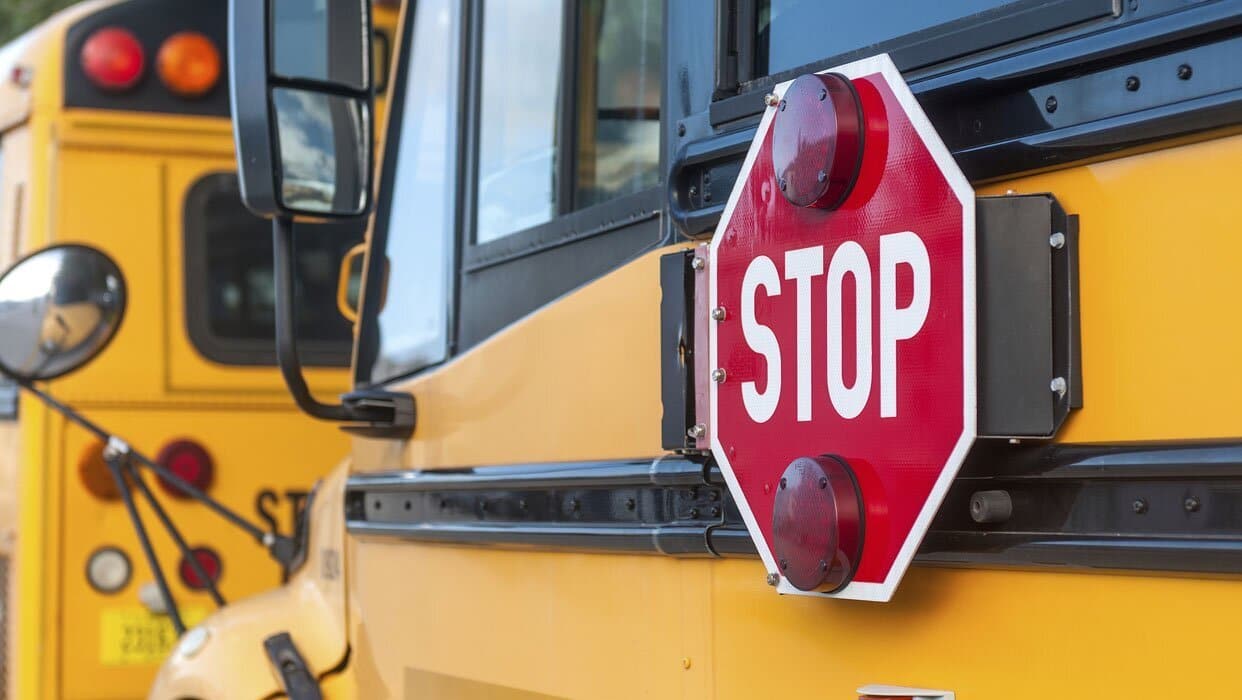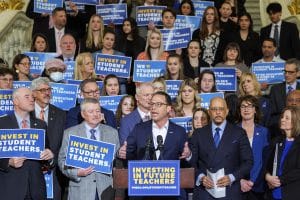There are plenty of reasons to oppose Doug Mastriano’s bid for the governor’s office, and with the recent Supreme Court decision overturning Roe v. Wade, there will no doubt be special focus on his stance on abortion (Never, ever, under any circumstances). But we should not forget his plan to defund public education.
The republican state senator has said that he would like to cut per pupil spending in half, moving from a state average of $19,000 down to $9,000 or so. On his website, he explains how he would do that — by eliminating property taxes in Pennsylvania and giving each student a state-issued voucher.
How would that look for school districts?
It’s important to remember that the $19,000 per pupil figure is an average, and that Harrisburg contributes only, on average, about one-third of school district funding.
For example, the Central Bucks School District currently spends $17,016 per student; 77 percent of the district’s funding comes from local taxpayers. New Hope-Solebury ranks fourth in the state for spending, with a whopping $26,027 per student, and only 16 percent of their funding comes from the state.
As Susan Spicka, executive director of Education Voters of Pennsylvania points out, “The highest spending school districts are primarily funded by property taxes, not by their state funding. If you eliminate property taxes and don’t backfill them, it is actually the highest-spending school districts that get hit the hardest.”
READ: Pennsylvania’s School Funding Scheme Creates A Permanent Underclass. That May Be The Point.
The loss would not just be in terms of finances, but in terms of control.
“Wealthy communities have been able to say ‘We can do what we want because we’re using our own local dollars to pay for our schools,’” Spicka added. Those school districts would lose “any insulation” under Mastriano’s system. “They would lose complete control over their local schools” if Harrisburg controlled all the educational purse strings.
Of course, one of the unspoken ideas behind a school voucher system is that wealthy parents can supplement their vouchers with their own money to provide their children with opportunities unavailable to parents who can only afford what the vouchers will pay for. Mastriano’s property tax elimination plan leans into that inequity by giving owners of million-dollar homes some bonus funds to spend on education.
But actual school systems would still be hammered. With a school budget cut by at least 50 percent, communities can kiss extras like football teams and marching bands goodbye.
Mastriano claims that such a massive cut would simply spark innovation and creativity, but it takes an awful lot of creativity to blunt the impact of budget cuts of this size.
For instance, a small town district in New Hampshire considered a similar cut to $10,000 per student funding; the “innovation” that they faced was microschools, a version of computer-delivered home schooling. Once local taxpayers realized how much they would lose, they scuttled the plan.
Charter school operators have not yet weighed in on the plan, but we know that when Governor Tom Wolf proposed a flat tuition rate of $9,500 for cyber charters, they protested loudly, calling it a “slash and burn.”
There are many unanswered questions about Mastriano’s plan. His $9,000 per pupil funding scheme would be funding for regular students, but it would be doubly inadequate for students with special needs.
Does he have some plan for supplementing the vouchers of students with special needs?
How would his plan be funded? $9,000 apiece for Pennsylvania’s 1.7 million students equals $15.3 billion dollars; the state’s basic education support to districts stands at about $7 billion, a record high amount. Where does Mastriano plan to find the additional money?
Mastriano’s half-baked plan would gut the public schools of Bucks County and batter most of the rest throughout the state as well. It’s one more reason not to vote for him in November.







